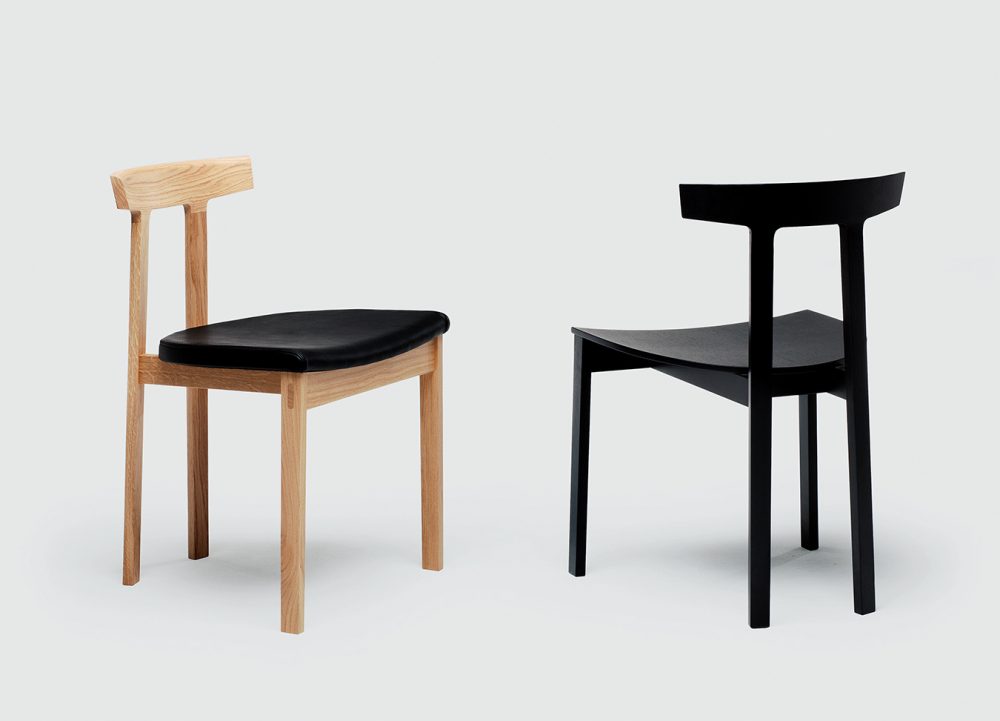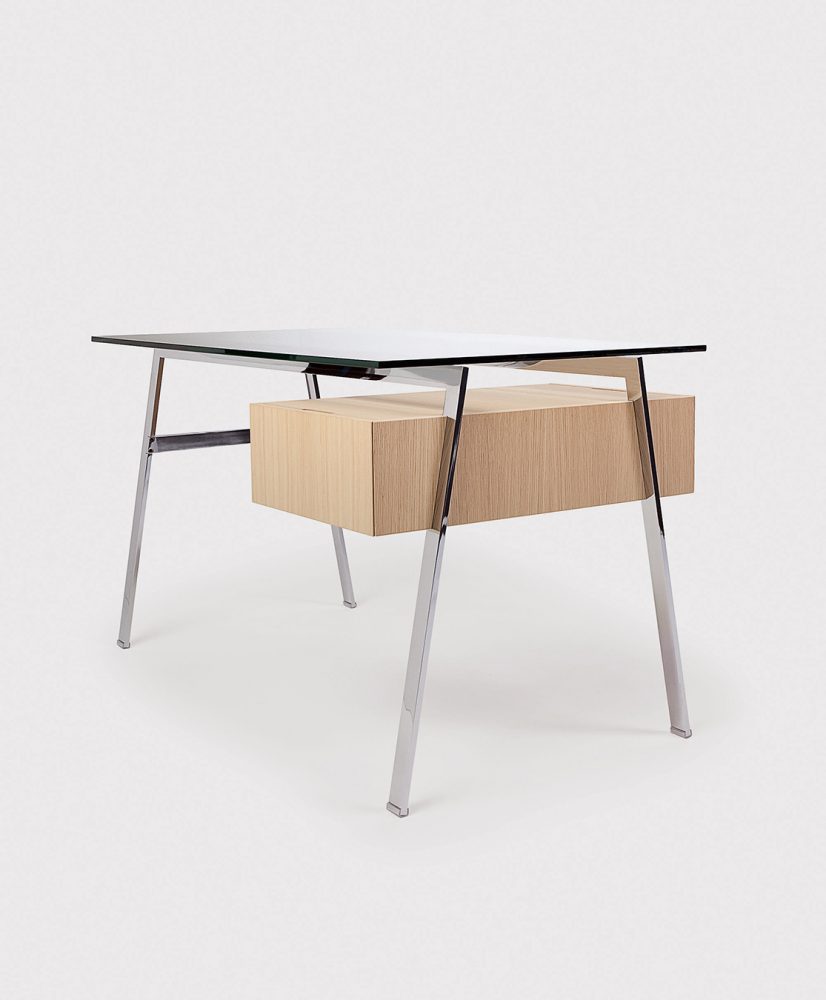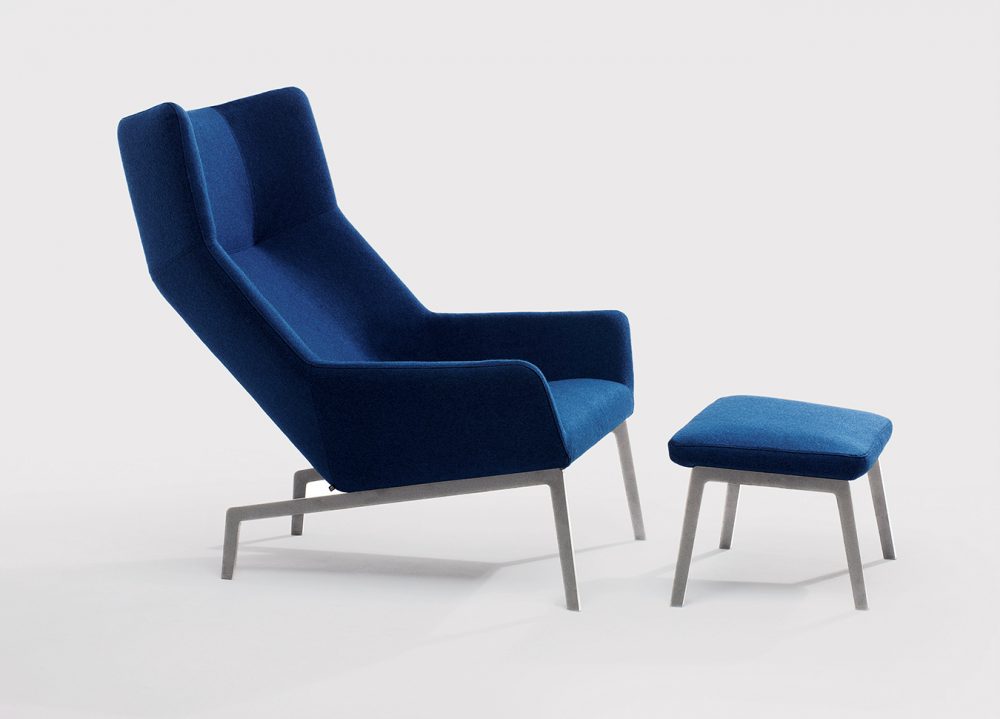There is nothing superfluous about Niels Bendtsen, and by extension nothing superfluous about his designs. To put it another way, if his sofas or chairs were crafted like stories, he’s a Hemingway—minimalist and understated. And he’s economical too, having omitted two consonants in his surname to christen his design and manufacturing company Bensen.
The 68-year-old Danish-Canadian industrial designer gleaned his education through familial nurture and his own curious nature. Bendtsen’s father, a cabinetmaker, apprenticed with Jacob Kjær in Copenhagen; Bendtsen apprenticed with his father at the family shop in North Vancouver, where his respect for precision was formalized.
In 1963, Bendtsen opened his own retail store in West Vancouver, Danet Interiors. Time spent with the Scandinavian imports he sold there unlocked an analytic artistry. “Half of it was designed and produced so poorly,” he recalls. “I kept looking at the furniture and thought, ‘I could solve that better.’ That’s how it started.”
A cast metal candlestick holder, the first product he created, sold well at Danet; it sparked a lifetime of design and manufacturing. Bendtsen returned to his birthplace, Denmark, in 1973, and dove headfirst into design at the height of the cash-and-carry craze. He freelanced for the likes of Eilersen, IKEA, and Kebe—for whom he created the Ribbon Chair that holds a place in the Museum of Modern Art’s permanent collection—and made his own pieces under the moniker 2B.
Returning to Canada in 1984, Bendtsen reopened his store, renaming it Inform Interiors, and began a modest manufacturing operation for his own designs. The fact that European factories were now some 6,500 kilometres away was part of the reason, but control of the final product was the real impetus. “I like this idea—do a sketch that you like and hand it off to somebody,” Bendtsen says. “If only they did it right. Manufacturers are notorious for changing things, because they want to make it cheaper, or they just think, ‘This is better.’ Then you have arguments.”
As with many designers, he starts with a sketch. He has new ideas and decades of old ones to draw from, contained in hundreds of nondescript black notebooks that have accumulated over the years.
The design and manufacturing arm of Inform continued to grow, and it now bears the name Bensen, occupying two buildings on Railway Street. The set-up allows Bendtsen to have a hand in the whole process. A piece of furniture, like the yet-untitled sofa he plans to release at May’s International Contemporary Furniture Fair in New York, is a problem to solve using both art and arithmetic.
As with many designers, he starts with a sketch. He has new ideas and decades of old ones to draw from, contained in hundreds of nondescript black notebooks that have accumulated over the years. These ideas—their merits of form, function, and market feasibility discussed—are then refined and rendered. For most creators, the buck stops here, but with wood, metal, and sofa framing shops, as well as a cut and sew department within his factory, Bendtsen can prototype until everything adds up.
His equation: “Rationally designed, rationally put together.” It’s evident in Brix, a modular stacking drawer system he began working on 10 years ago. “People obviously use a chest of drawers,” Bendtsen says. “If you could buy these things by the drawer—it seems like a logical thing, but until we created it, it didn’t exist.” This kind of smart subtlety is also present in Canyon, a sofa set with grooves for cushions to sit in to prevent them from sliding, and Homework, a desk where trestle and cabinet are combined to create strength and space.
Bendtsen is just as concerned with the underlying structure, details not obvious on first read of a product. The underside of the soon-to-be-released sofa hides innovative, functional connectors that make the manufacturing process more efficient. Park, a minimalist wingback chair, is made by injection-moulding foam around complex steel frames, a technique borrowed from the automotive industry that allows for comfort without bulk. And where most sofa manufacturers allow a half-inch of extra fabric for fitting, the Bensen design hovers around only a half-millimetre.
There’s rhyme to all his reason. “Nowadays you have to be incredibly precise in what you do,” Bendtsen says. “Because it has to do with manufacturing, you don’t have the luxury of a lot of labour.” His proclivity for precision, from design rendering to end product, carries weight with the other furniture companies for whom Bendtsen designs (among them are Poliform, Montis, and Linteloo). “Other companies like us because we know how to make things. It’s not like coming in with an oddball sketch. For us, design and engineering go hand in hand. We’ll send them fully engineered designs, finished prototypes. We send them everything.”
If Bendtsen were guilty of any excess, it’s obsession with his occupation. Drawing those sofas and chairs is his hobby; his sketchbook with him wherever he goes. “I used to sail and snowboard,” he says. “Now it’s doodling new furniture. Always.” he laughs. “Does that sound horrible?” Scores of Bensen owners surely think not












